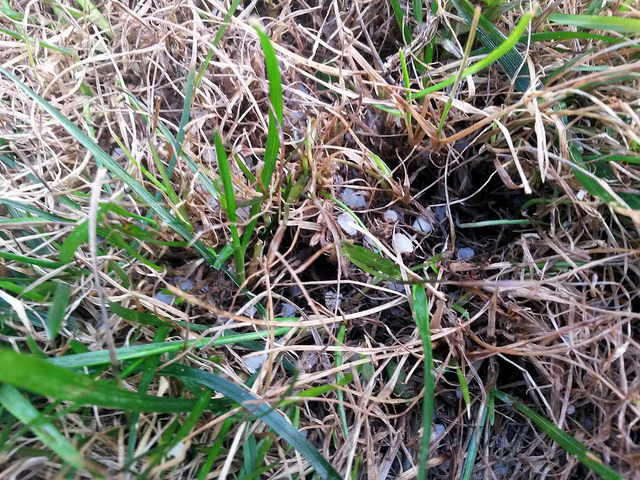During the growing season, one of the most common horticultural practices is the fertilization of plants. While fertilizer accelerates the growth of many plants, it can also be detrimental to plant health. When applied in large quantities, fertilizer saps plants of their moisture. Plants that are unable to replenish the moisture lost will become increasingly stressed, with many experiencing widespread foliar discoloration. If the area is not treated, the excess fertilizer will eventually compromise the plant’s root system, rendering it prone to failure.
Distribution & Habitat
Fertilizer burn occurs globally, wherever susceptible plants are present.
Hosts
Fertilizer burn affects most plants in forested, landscape, and garden settings.
What Is Fertilizer Burn?
Fertilizer burn is a physiological condition of plants that results in the burning or scorching of a plant’s foliage. The effects of fertilizer burn stem from the over-fertilization of plants, or the application of fertilizer to wet foliage. Fertilizer burn results when a plant is unable to replenish the moisture lost through its roots, and the plant becomes desiccated.
Symptoms of Fertilizer Burn
The effects of fertilizer burn generally become apparent within a few days. When slow-release fertilizers are employed, burn symptoms may be delayed, sometimes for several years. The most common symptoms of fertilizer burn include a yellowing, browning, or withering of plant foliage.
Grass that has been exposed to an excess of fertilizer may form white, yellow, or brown streaks. Lightly damaged plants may wilt, though many will rebound. Severely affected plants will appear scorched. As the fertilizer salts accumulate in the wounded tissue, the affected leaves will turn yellow or brown, before gradually collapse inwards. A white crust may form on the soil surface of affected areas.
How to Manage or Treat Fertilizer Burn
- Fertilize each plant in accordance with what it requires. Avoid over-fertilization, as it can increase the chance of fertilizer burn.
- Prior to fertilization, test the soil to determine if fertilization is necessary.
- Use slow-release fertilizers to reduce the potential for burning. Slow-release fertilizers gradually distribute salts into the soil. This helps to prevent the soil from becoming saturated with salts.
- Fertilizing plants with organic compost will eliminate the risk of fertilizer burn.
- After fertilizing, ensure that plants are thoroughly watered. The water will rinse the fertilizer off of the plants, and allow it to be evenly distributed into the soil. This will prevent the fertilizer from remaining on or close to the soil surface, where it could adversely affect the root system.
- Avoid fertilizing soaked lawns, or applying fertilizer to wet foliage.
- Do not apply fertilizer during periods of drought. When conditions are dry, fertilizer can become more concentrated in the soil.
- When symptoms appear, promptly treat the area by flushing the soil with water over several days. This will allow the fertilizer to sink into the soil rather than running off. Do not allow the water to run off, at it can contaminate nearby areas. If runoff penetrates a waterway, it can profoundly affect the environment.
Photo courtesy of Scot Nelson CC-by-2.0


